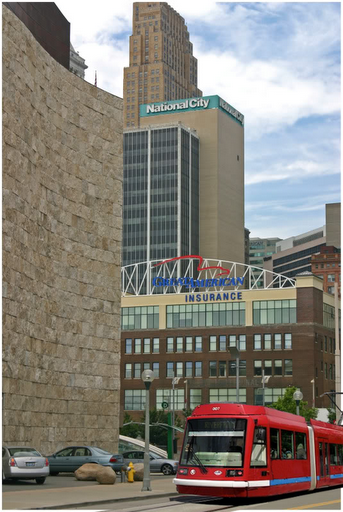 City Council’s Budget & Finance Committee voted yesterday 6-2 to approve $64 million in bonds that will fund Cincinnati’s modern streetcar system. The move comes on the heels of a $2.6 million bond approval and now sends a clear message to the Federal government that Cincinnati is committed to this project financially.
City Council’s Budget & Finance Committee voted yesterday 6-2 to approve $64 million in bonds that will fund Cincinnati’s modern streetcar system. The move comes on the heels of a $2.6 million bond approval and now sends a clear message to the Federal government that Cincinnati is committed to this project financially.
The local commitment covers about half of the total $128 million streetcar system that will run from Cincinnati’s riverfront, through Downtown and Over-the-Rhine, and up the hill into the Uptown neighborhoods. The Cincinnati Streetcar was also recently recommended for $15 million in State funds.
The Finance & Budget Committee meeting held yesterday attracted fewer people and public comments, but the breakdown was much the same. Of the 10 people to speak, only one person, COAST’s lawyer, spoke against the project. The other public comments were made by residents all over the city, business owners and students. Over the course of the past two meetings that brings the public comment tally to 38 in favor, 4 opposed.
The City of Cincinnati will now wait to hear back from the Feds next month about another $25 million for the transportation project. The Federal funding is considered to be critical for the project, but has been out-of-reach due to the lack of a local financial commitment to the project. Streetcar supporters say that with this approval Cincinnati stands a much greater chance at receiving Federal funds that passed over Cincinnati during the first round of TIGER grants.
Roxanne Qualls, Laure Quinlinvan, Chris Bortz, Jeff Berding, Cecil Thomas and Laketa Cole voted in favor of approving the bonds for the Cincinnati Streetcar while Chris Monzel and Charlie Winburn voted in opposition. Leslie Ghiz was absent. The full City Council, which is made up of the same body, will vote on the measure this Wednesday, May 12 and is expected to pass with a 6-3 majority after Ghiz casts her opposition vote.
You can stay up-to-date on the Cincinnati Streetcar project by reading its blog, or by following the City’s official webpage where you can also make contributions online to help make the project become reality. Follow @CincyStreetcar on Twitter for even more information.


